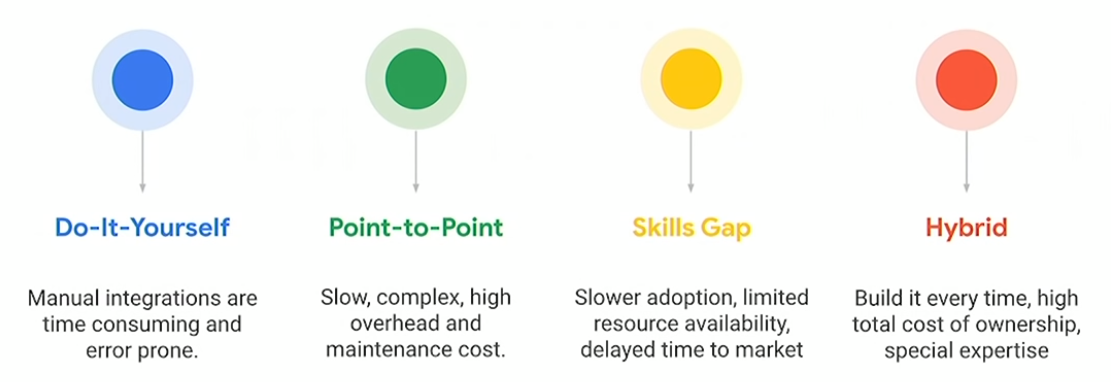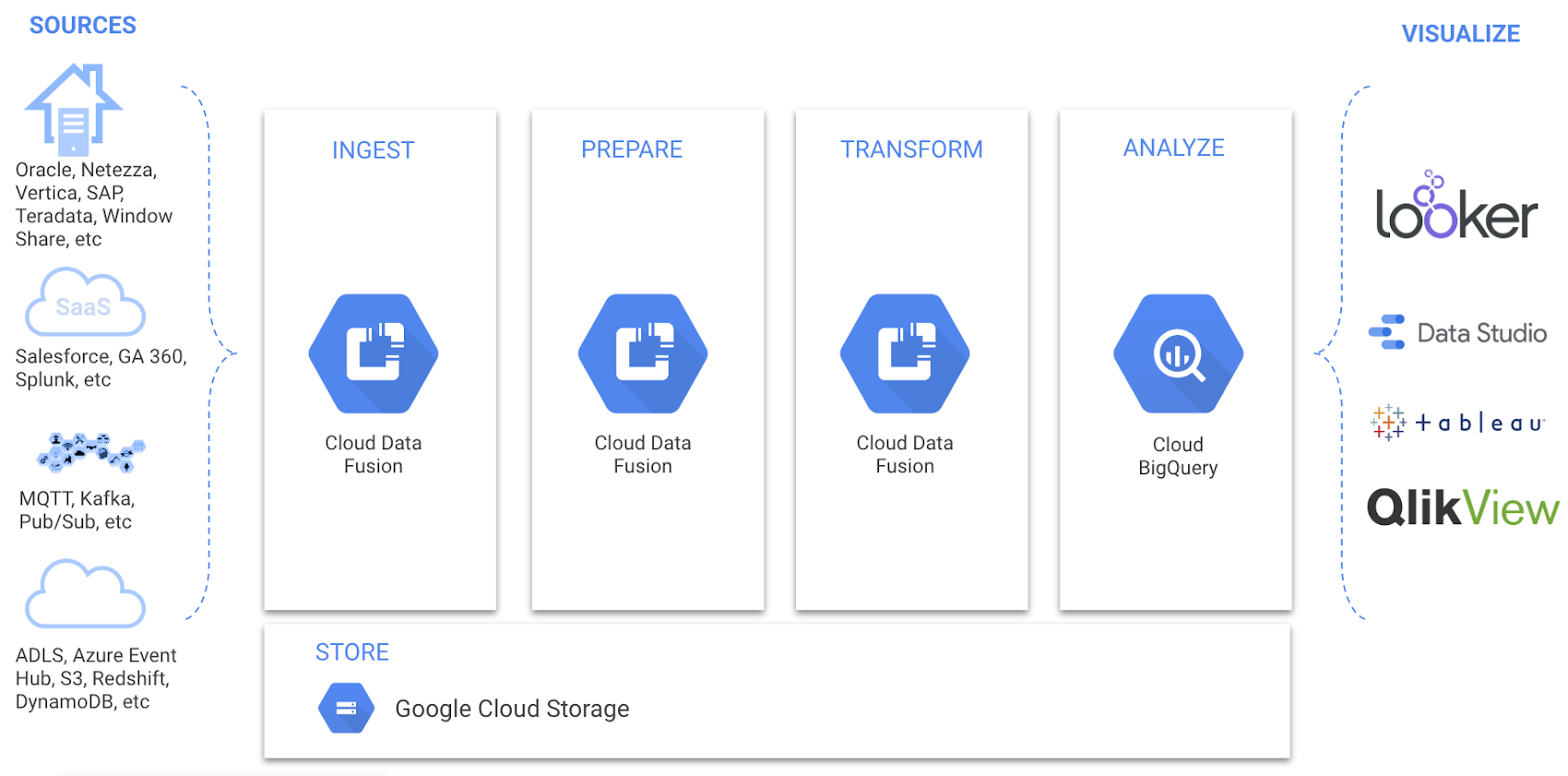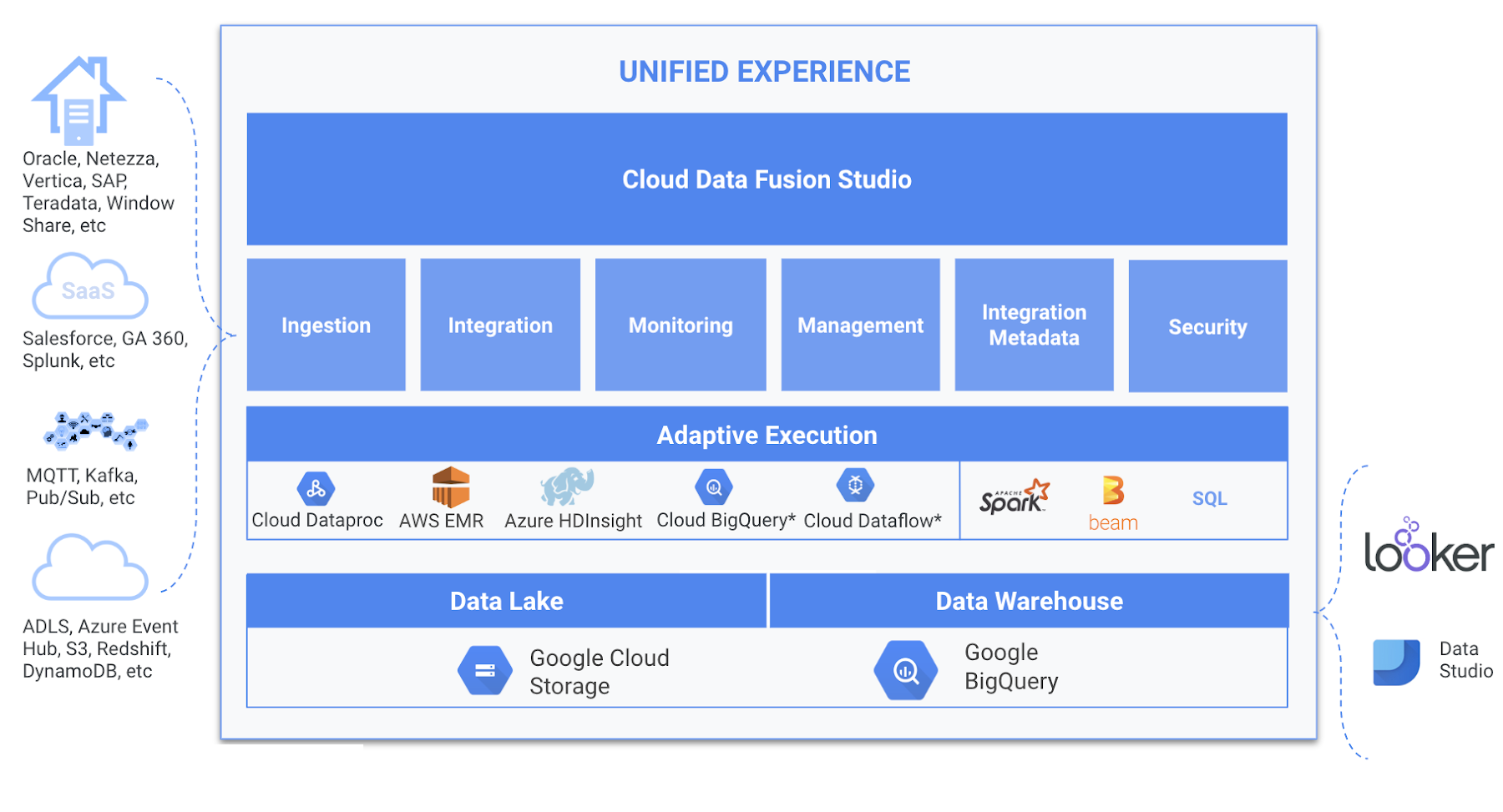Data fusion is the process of integrating multiple data from sources in order to produce more consistent and accurate information. The multiple data sources provide better results compare to individual data source.
| The key challenges of integrating all these data are given in the figure: |

|
|
Google Cloud Data Fusion
It comes at a time where companies struggle to deal with a huge amount of data spread across many data sources, and to fuse them into a central data warehouse. Google Cloud Data Fusion helps users to efficiently build and manage ETL (Extract, Transform, and Load) data pipelines. It intents to shift the focus from code to a focus on insights and action. |


|